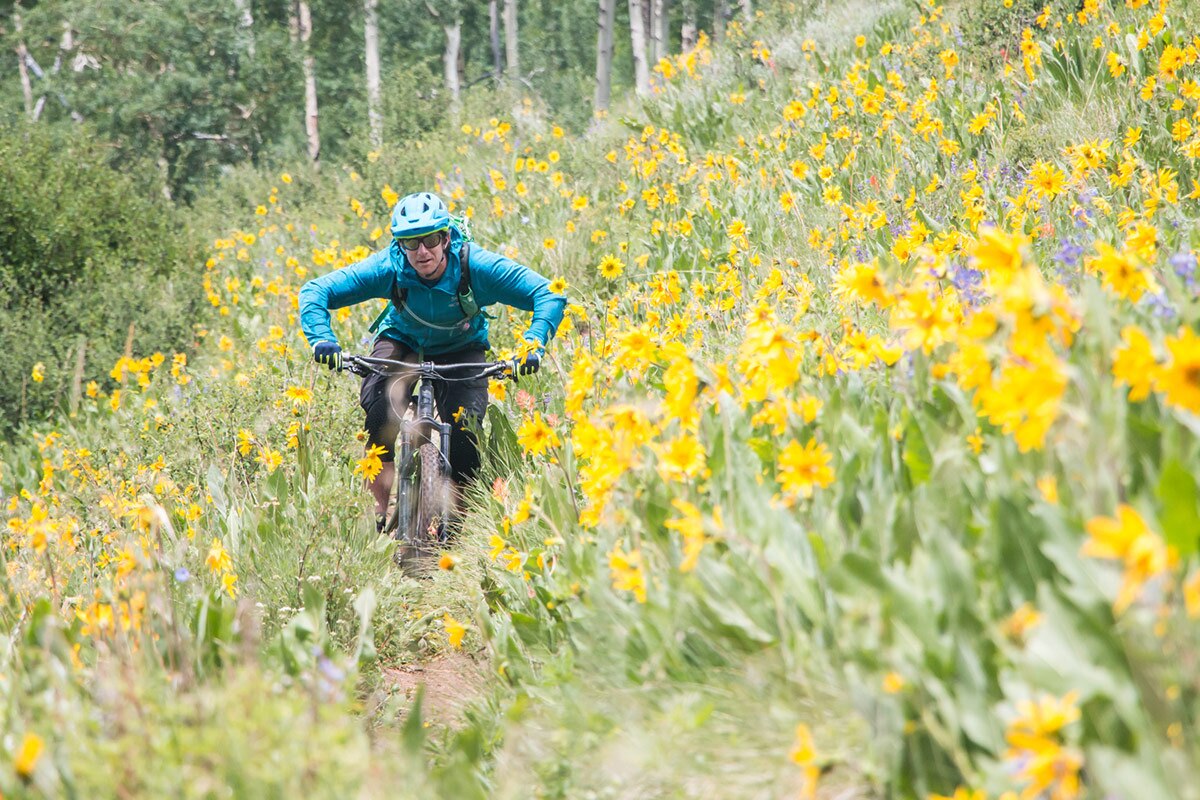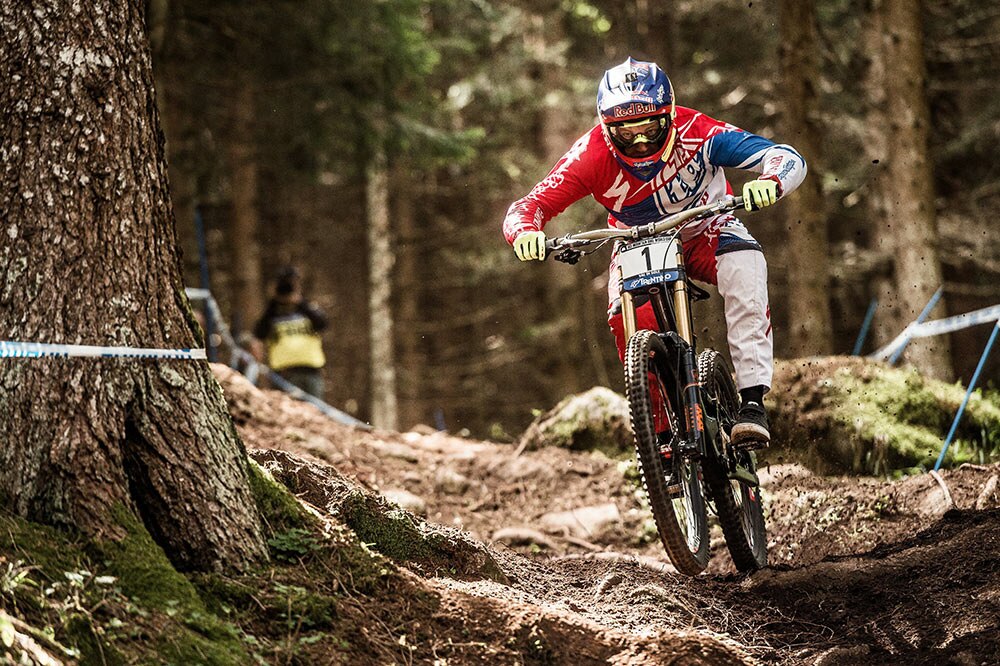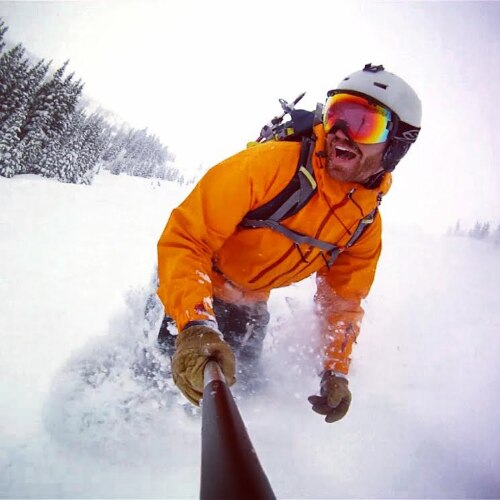Wider bars mean more stability, right? The short answer is yes. The long answer is, well, kinda long.
At six-foot-three-inches tall, an 800mm handlebar allows me to get into a super comfortable and stable position while maintaining a posture that is conducive to both shoulder strength and mobility. A perfect world right there. That said, if you're 5'9″ and still rocking the full width of the stock bars on your new, hard-charging enduro rig, odds are that you're sacrificing shoulder health to increase stability and ride quality via an overly wide handlebar.
Are your shoulders sore? If so, it's time to assess your position on the bike.
The bar width debate starts with increasing the stability of your riding and stops with the health of your shoulders.
First, it's important to note that you'll be strongest and most stable on your bike when your humerus (the big bone between your elbow and shoulder) is in external rotation and your scapula (shoulder blade) is seated both slightly backward and downward. The opposite position (elbows up, shoulders shrugged), often caused by a handlebar that's too wide for the rider, is less-than-optimal in regard to muscle activation and can heighten the risk of injury to the shoulder joint. We often see impingement-like symptoms (rotator cuff irritation) and anterior shoulder pain (i.e., bicep irritation) in patients that ride with this positioning.
Let's assess the position of rider below. Notice the high elbows and shrugged shoulders? If you are most comfortable on your bars in this position, it's quite possible they are too wide. Optimal shoulder mechanics will be present with a more externally rotated humerus (elbows down slightly). This allows for musculature at the scapula to stabilize the shoulder joint properly resulting in improved handling and range of motion during descents.

Below, we see Aaron Gwin shredding a downhill run harder than any of us mortals can imagine. Notice that his shoulders are not elevated up near his ears and that he has a slight external rotation at the upper arm. Also notice the positioning of his elbows: They're closer to the level of the bar instead of closer to the level of the shoulder. Nice! The man has incredible strength. A strong posterior rotator cuff and global scapular musculature make the difference here.

It's very difficult (and possibly dangerous!) to assess your own position while riding, so have a friend film you as you descend a section of trail. Evaluate your shoulder and elbow positions as you review the video. Are your elbows flared upward significantly while your shoulders are shrugged? If so, you may benefit from a narrower bar.
In the clinic, we use a wireless EMG to assess muscle activation patterns with various bar sizes, allowing us to pinpoint a rider's perfect fit. Without that tool at your disposal, you can experiment in the field by gradually cutting down your bars (5-10mm at a time). After each modification, have your friend film you again and then re-assess your body position. Too scared to just start cutting those marvelous bars? My friend and renowned skills guru, Lee McCormack, offered some solid advice on the topic of finding the right bar width in a recent article.
The key is to find the balance between how your ride feels and how well you can control your shoulder/elbow position. And remember, that perfect balance is probably not at the 800mm mark.
Editor's note: This story was originally published by REVO Phisiotherapy and Sports Performance

